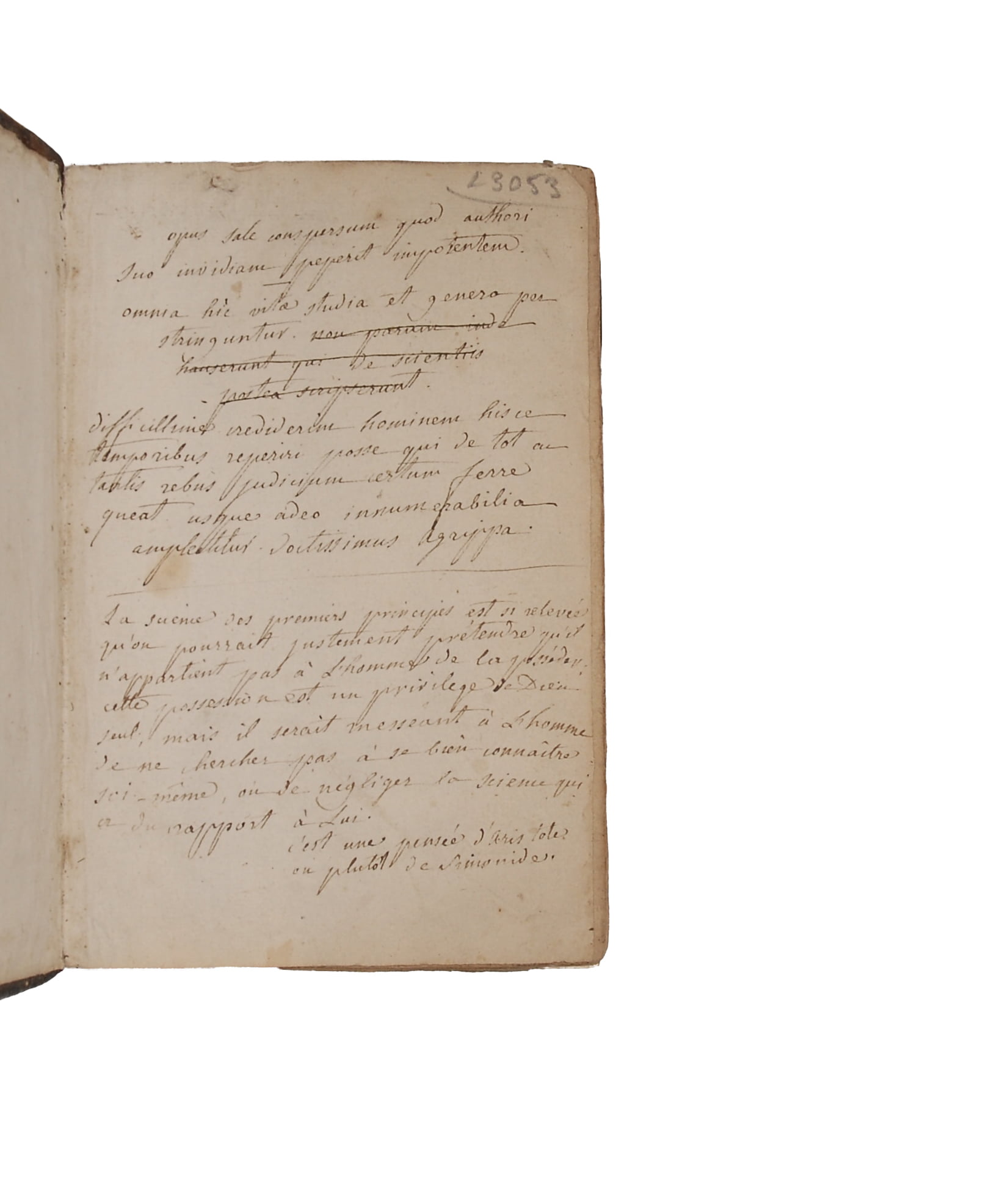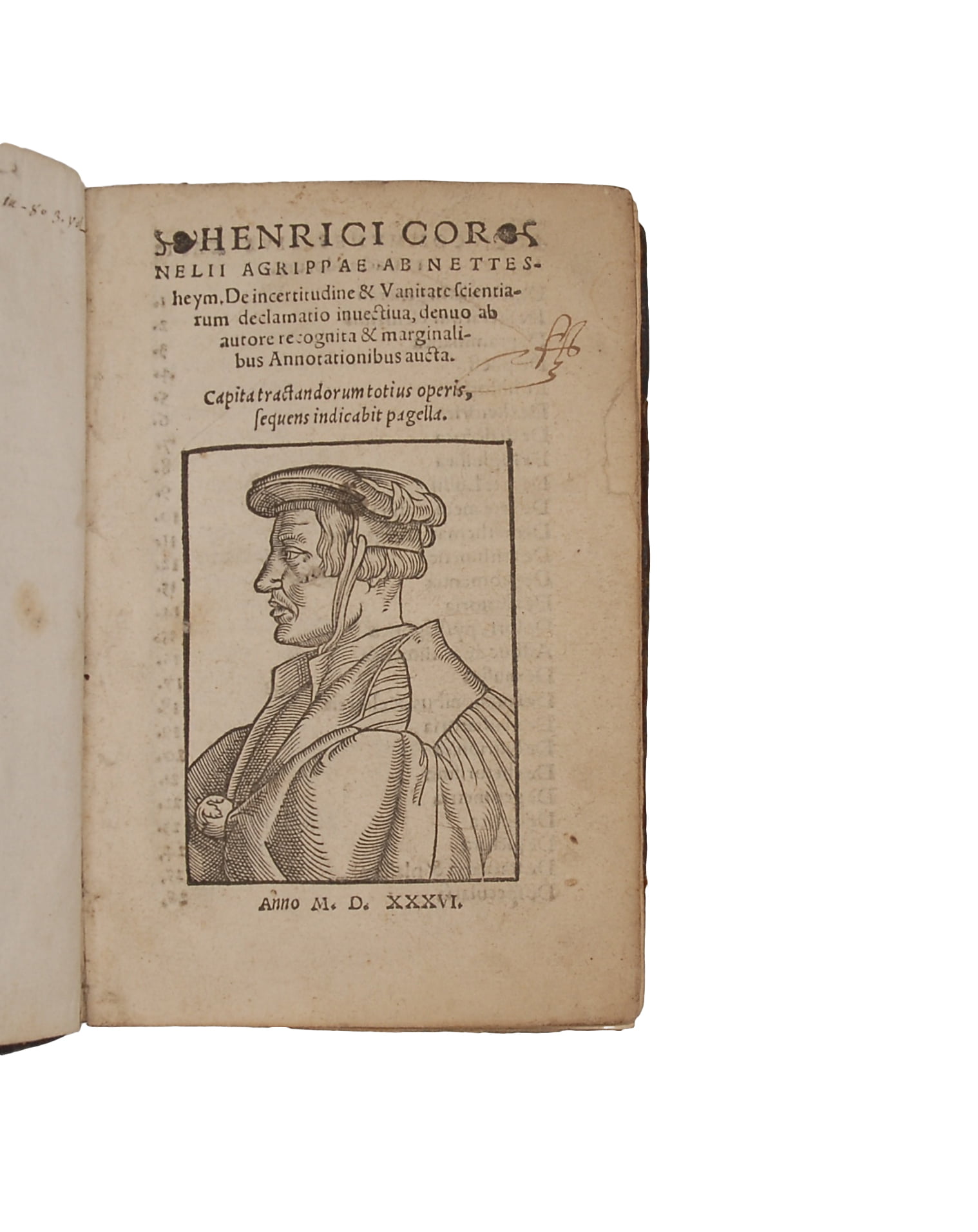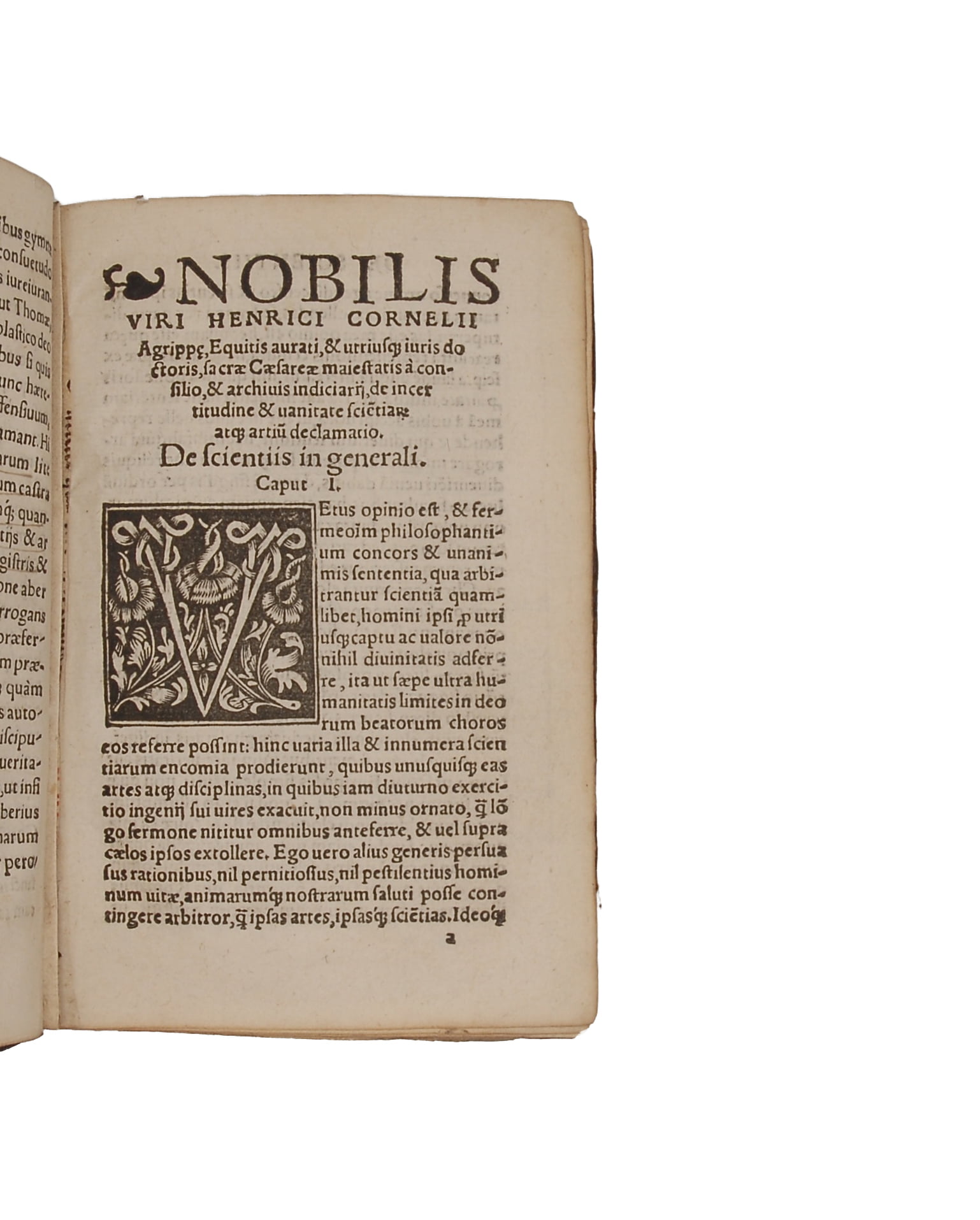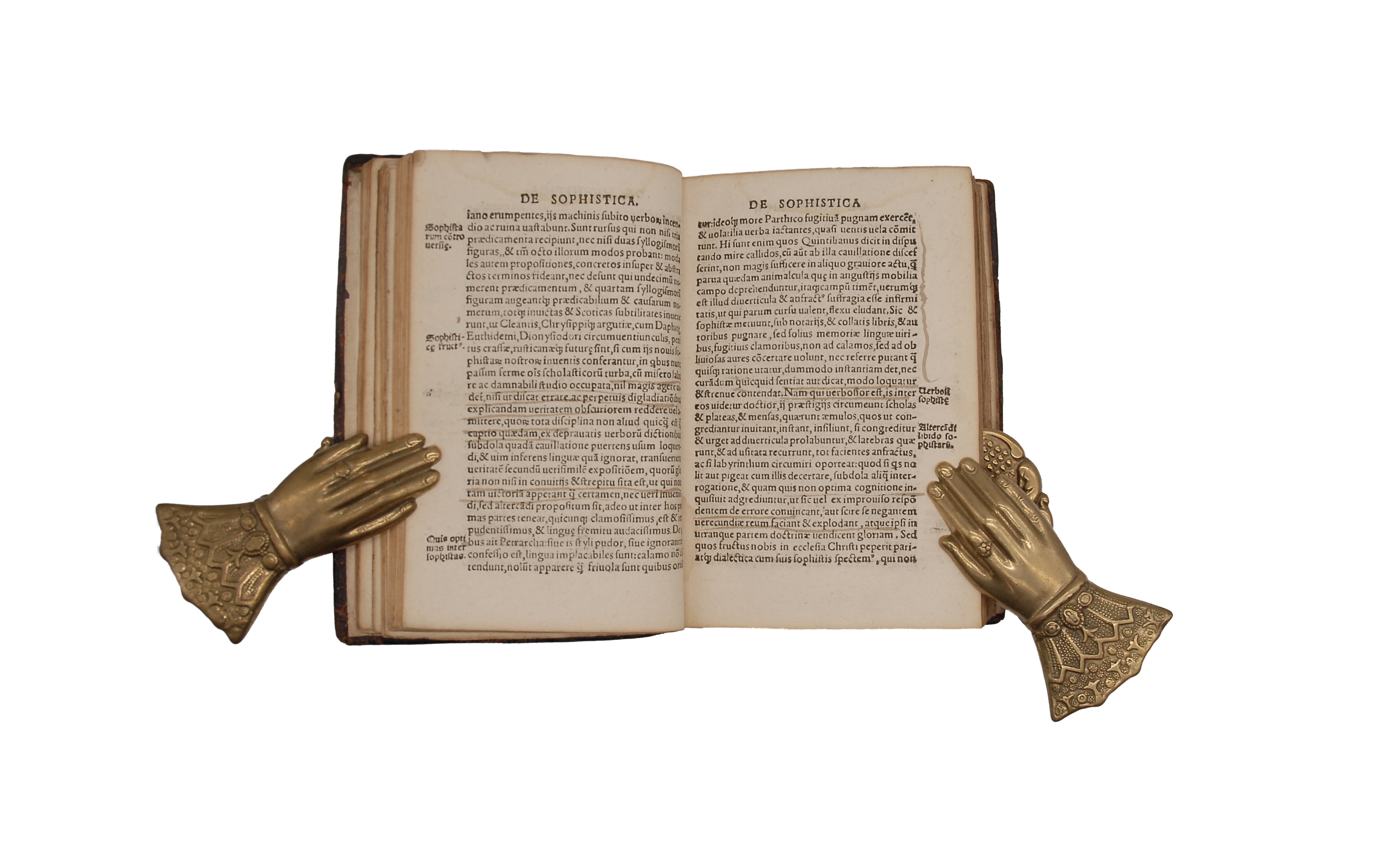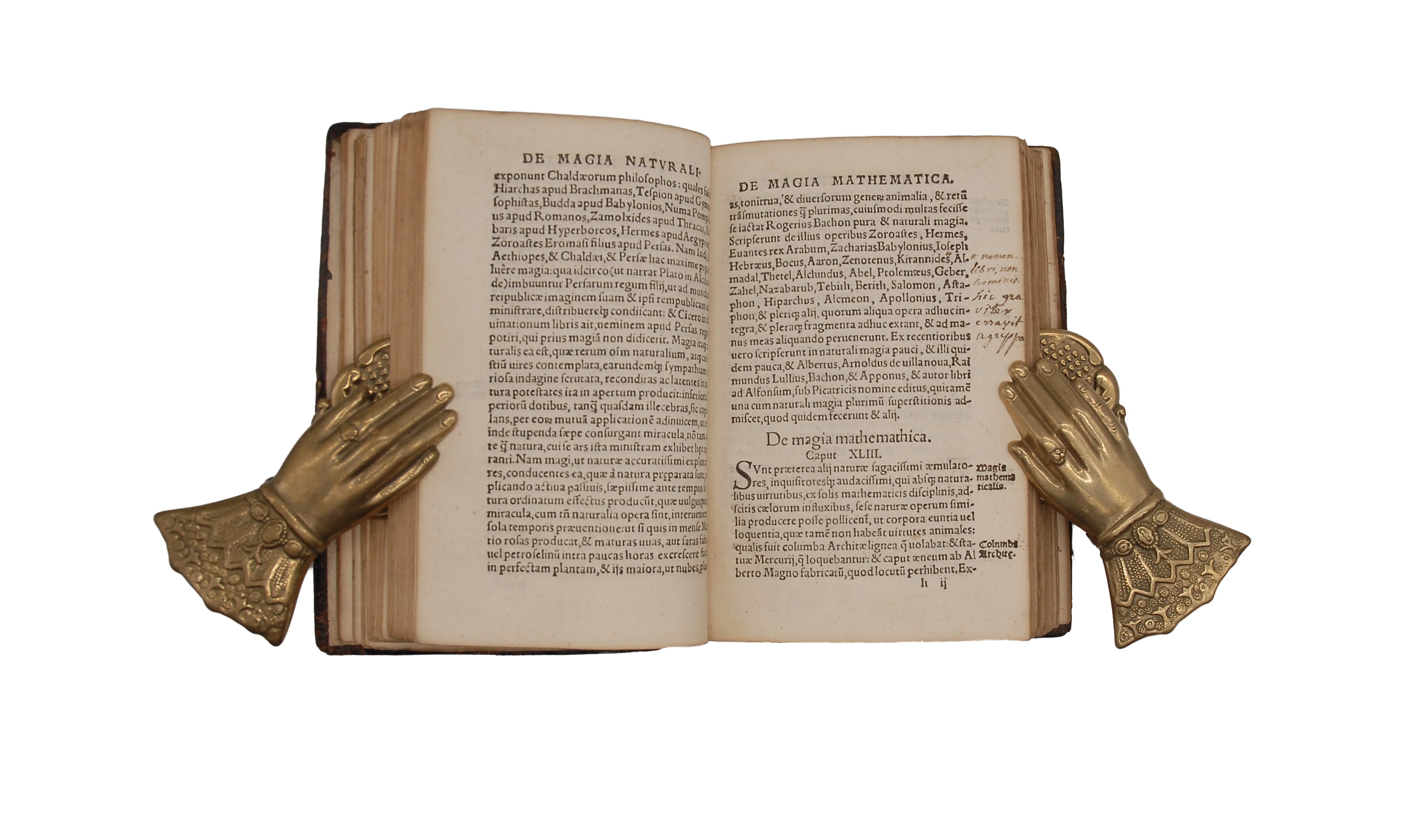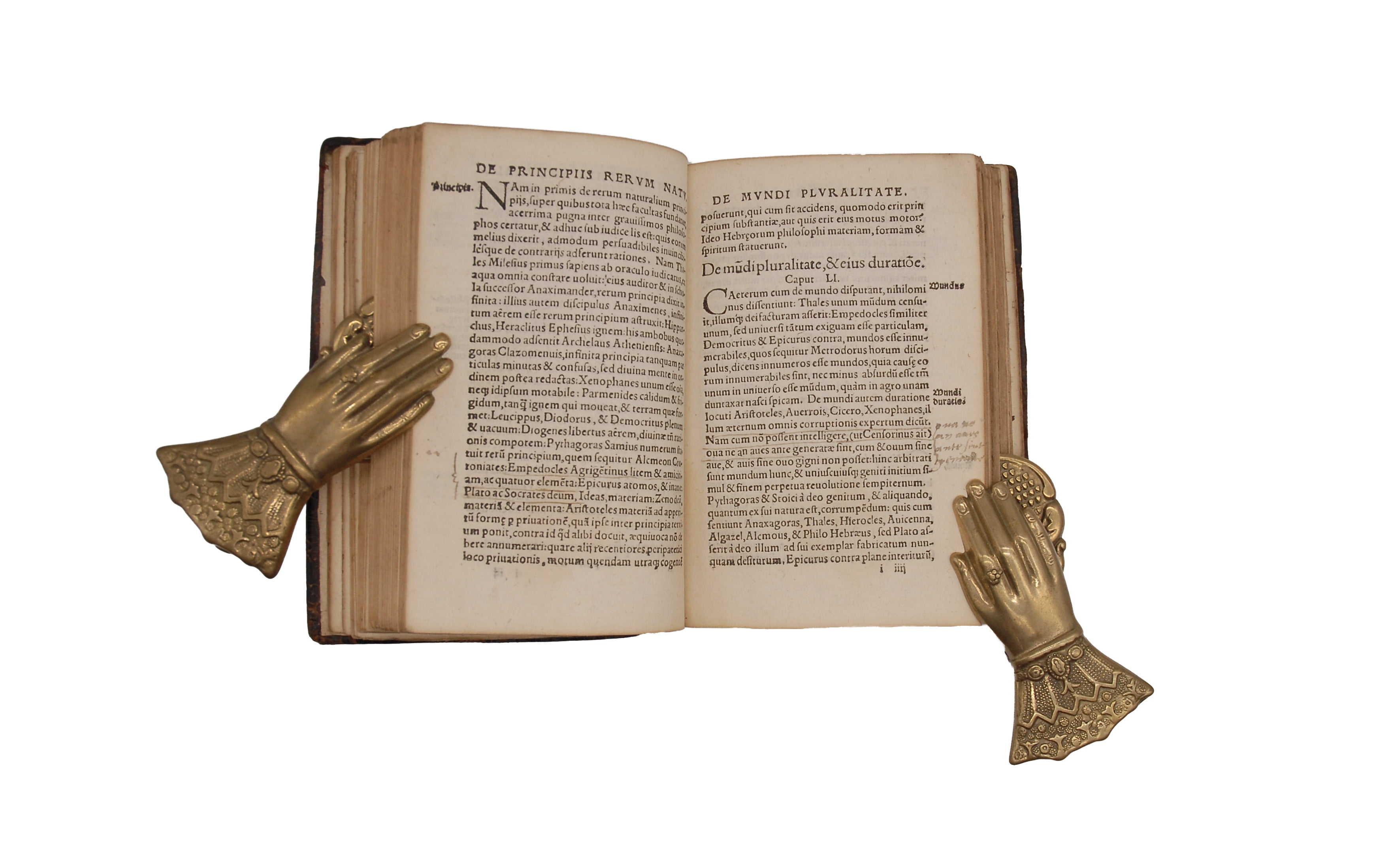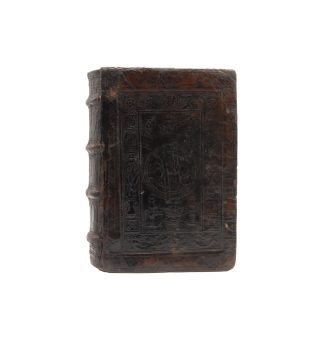AGRIPPA, Cornelius
INTERESTING CONTEMPORARY BINDING
De incertitudine et vanitate scientiarum
[Cologne, Eucharius Cervicornus, 1536]£4,250.00
8vo. 208 unnumbered ll., A8, a-Bb8. Roman letter, little Gothic. Author’s woodcut portrait to t-p, a few decorated white-on-black initials. T-p a little age yellowed, small tear from fore-edge, slight yellowing, light water stain in final gatherings, vellum slip from rubricated C15 Dutch ms. used as spine lining just visible, penultimate gathering slightly loosening at foot, small mark to lower outer blank corner of last two ll. A good, unsophisticated copy in contemporary Netherlandish calf, panel-stamped, double ruled, border of tendrils, urns, cherub at head and two interlacing wyverns at foot, centre panel with imperial arms, circular portrait of Charles V signed KO and columns of Hercules with imperial motto Plus Ultra, raised bands, few cracks to covers, edges a bit rubbed. Bookplate of Maurice Burrus and contemporary ms. inscription (signed F. Hessek?) on underlying sheet (visible with UV) on front pastedown, bibliographical notes c1800 to feps, contemporary ms. monogram (FH) to t-p, occasional contemporary annotations.
An attractive, unsophisticated copy, in an unusual, contemporary Netherlandish binding, of this extremely influential philosophical work, praised by the likes of Montaigne and Descartes. Due to the controversial reputation of its author, several early editions have few recorded copies and a complex bibliographical history, i.e., from the first of 1530 (possibly a ‘ghost’) to 1539, with most bearing neither imprint nor (frequently) a date. According to D. Clément’s ‘Bibliothèque curieuse’ (1750), ‘this edition is very similar to that printed in Cologne. The pages are unnumbered. […] It has no suppressed passages. There is one difference: the title is decorated with the bust of Cornelius Agrippa, absent in all preceding six editions’ (I, n.86). This is one of his earliest and most reliable portraits.
Agrippa (1486-1535) was a major German polymath, physician, soldier (who travelled extensively in Europe) and official historian to Charles V; he was especially renowned for his ‘occulta’ and ideas on the cabala (Bodin called him ‘the greatest magician of his age’), which led to clashes with the Inquisition, despite his recantation. Agrippa’s ambivalence towards occultism, religion and epistemology caused a mixed reception of ‘De incertitudine’—a harsh critique of all sciences and arts, and Renaissance epistemology in general—which Agrippa subsequently defended in print. Each of the 102 chapters summarises wittily, only to berate, a discipline or art, from the elements of the trivium and quadrivium to optics, acting, painting, architecture, politics, natural philosophy, commerce, agriculture, surgery, anatomy, prostitution, veterinary medicine, law and cooking. There are fascinating sections on judicial astrology (‘an art bringing no certainty, which can be turned into anything, according to opinion’), physiognomy (which ‘infers nonsense’ from horoscopes based on physical appearance), magic (including necromancy), heraldry (by which ‘heralds dressed in military uniform astrologise, philosophise and theologise with foolish knowledge’), the inquisition (with a violent attack against the Dominicans’ trials of heretics from his native Cologne), and alchemy (‘which can be defined as an art, or sham, or persecution of nature’). The conclusion is an ‘encomium of the ass’, i.e., ignorance, which is preferable to this useless knowledge. Despite the serious attacks of great minds like Bodin and Thevet, ‘De incertitudine’ is a deeply ironic work, an aspect of Agrippa’s work much praised, for instance, by Philip Sidney. ‘Like the works in similar vein of Erasmus, Rabelais and many others, [it] is a literary paradox and at the same time a work of polemic’ (Bowen, 259), spanning the abuses of the Church and ‘false’ science.
The contemporary annotator of this copy, probably the F. Hassek of the concealed inscription and monogram, highlighted passages against astrology, black magic, references to Agrippa’s work on occult philosophy, theories of the soul, pimps, the ‘arts of women’ and cookery. He was knowledgeable as he identified a mistake, where Agrippa used ‘Kirannides’ to mean the name of the author, not the title of his book.
The unusual, contemporary Netherlandish binding, panel-stamped and signed by the obscure K.O., is not listed in Fogelmark’s ‘Flemish and Related Panel-Stamped Bindings’ or major bookbinding bibliographies. The stylised imperial escutcheon with the double-headed eagle and the columns with Charles V’s motto ‘Plus Ultra’ are reminiscent of BL c46b21.
Only three copies recorded in the US.
VD16 ZV 271; Cantamessa n.73 (mentioned); Caillet I, 87 (later eds); Durling (earlier eds); Duveen p.6 (earlier eds). Not in Brunet or Ferguson. B.C. Bowen, ‘Cornelius Agrippa’s De Vanitate: Polemic or Paradox?’, Bib. d’Humanisme et Ren. 34 (1972), 249-56.In stock




